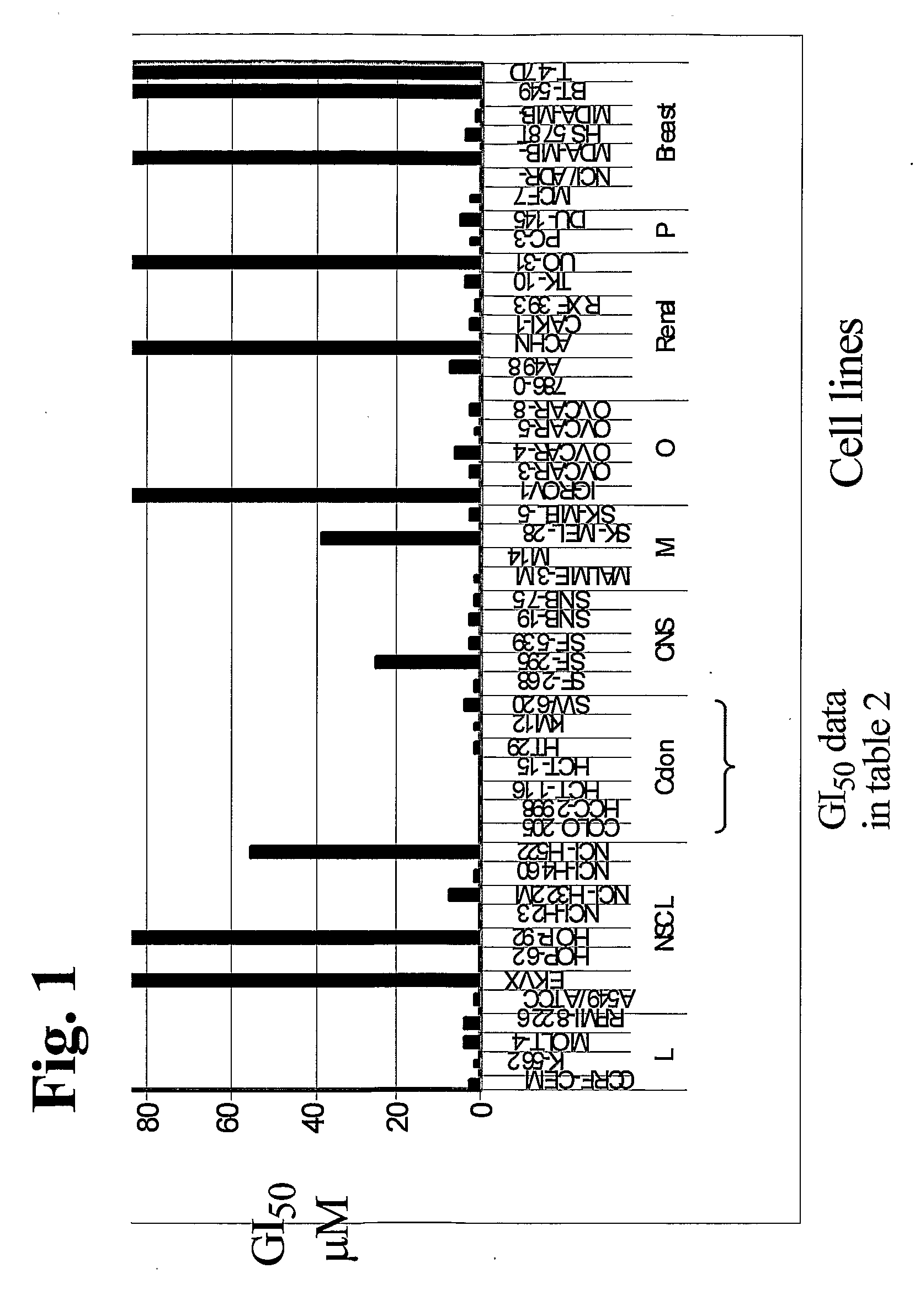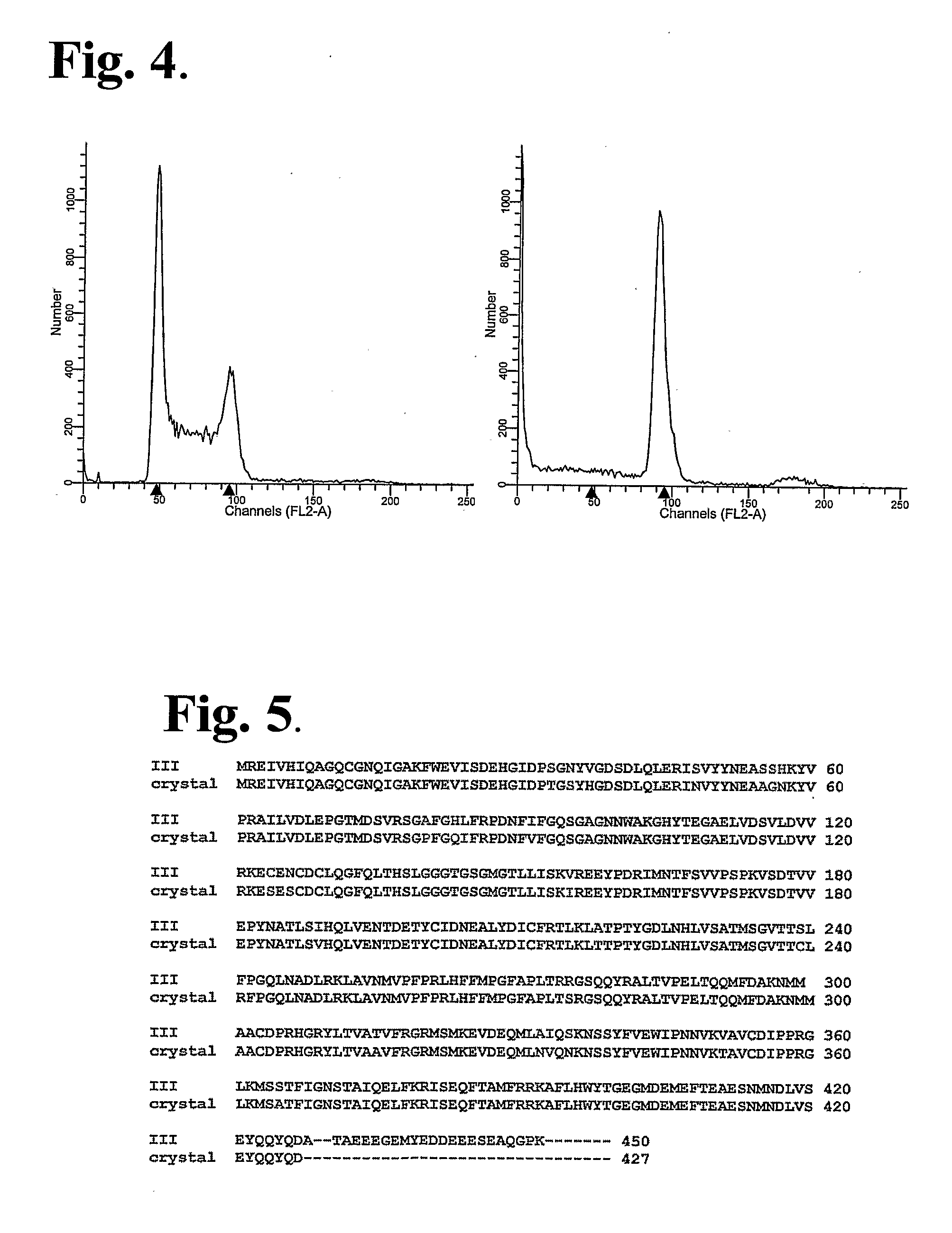Methods of determining beta-iii tubulin expression
a technology of beta-iii tubulin and tubulin splicing, which is applied in the direction of ultrasonic/sonic/infrasonic diagnostics, diagnostic recording/measuring, drug compositions, etc., can solve the problems of affecting the function of microtubules, affecting the survival rate of patients, and essentially incurable, and achieves the effect of inhibiting vascular endothelial cells
- Summary
- Abstract
- Description
- Claims
- Application Information
AI Technical Summary
Benefits of technology
Problems solved by technology
Method used
Image
Examples
example embodiments
[0088] Thalidomide (shown below) was developed in the 1950s by Chemie Grunenthal of Germany as a non-toxic sedative. It was widely used to prevent morning sickness in pregnant women.
[0089] In addition to its sedative effects in humans, an association was reported of teratogenic limb defects from maternal thalidomide usage. Aside from this serious teratogenic effect on the fetus, the drug does have therapeutic value: (1) for its immunosuppressive effect in the treatment of graft versus host disease; (2) in the treatment of leprosy; and (3) for inflammatory dermatoses. Furthermore, thalidomide has significant anti-angiogenic activity, and as a result, is finding more extensive clinical use in the treatment of various cancers, particularly in cancers having a poor prognosis due to microvessel density (e.g. multiple myeloma and prostate). Anti-angiogenic thalidomide derivatives have been previously described, including a derivative wherein the glutaramide ring is replaced with a pheny...
example 1
SC-2-71 Effects on Proliferation
[0229] SC-2-71 was evaluated against human cultured cell lines in the NCI Anticancer Drug Development Program. The data provided below in Table 2 reveals that SC-2-71 is a potent inhibitor of colon cancer proliferation with anti-proliferative activities ranging from 68 nM to 4 μM. This includes potent inhibition of colon cancer cells from primary tumors, distal metastasis and ascites fluid.
TABLE 2GI50 summary for human colon cell lines treated with SC-2-71GI50 Data (μM)CompoundT29COLO205HCC-2998HCT-116HCT-15KM12SW-620SC-2-711.90.0680.50.424Vincristinea0.110.120.110.120.140.120.115FUa.77.21.44.05.811.126.2
aNCI data. 5FU = 5-Fluorouracil
[0230] Further grade III tumor cells (HCT116) were also significantly inhibited (GI50=500 nM). In comparison to 5-FU (currently approved for stage III colon cancer), SC-2-71 was significantly more effective at inhibiting human colon cancer cell lines. SC-2-71 had similar potency as compared to Vincristine, a well kno...
example 2
Comparative Molecular Field Analysis (COMFA) of SC-2-71 and Tubulin Polymerization
[0237] CoMFA is a powerful ligand based discovery methodology to identify important relationships between steric and electrostatic molecular properties and biological data. A β-tubulin CoMFA has been developed that resulted in models which were predictive of both tubulin polymerization and [3H]colchicine binding for a large set of β-tubulin inhibitors (Brown, et al., Bioorganic and Medicinal Chemistry, 8:6:1433-1441, 2000). This study produced the first predictive models for multiple structural types including combretastatins, colchicine and podophyllotoxin. More recently, this CoMFA model was used to identify and predict the β-tubulin depolymerization activity of SC-2-71. The CoMFA model predicted that SC-2-71 would be a potent inhibitor of tubulin polymerization as was previously reported for the parent HAMEL4 compound (Hour et al., Journal of Medicinal Chemistry, 43:23:4479-87, 2000).
SC-2-71 Inhi...
PUM
| Property | Measurement | Unit |
|---|---|---|
| wavelength | aaaaa | aaaaa |
| emission wavelength | aaaaa | aaaaa |
| emission wavelength | aaaaa | aaaaa |
Abstract
Description
Claims
Application Information
 Login to View More
Login to View More - R&D
- Intellectual Property
- Life Sciences
- Materials
- Tech Scout
- Unparalleled Data Quality
- Higher Quality Content
- 60% Fewer Hallucinations
Browse by: Latest US Patents, China's latest patents, Technical Efficacy Thesaurus, Application Domain, Technology Topic, Popular Technical Reports.
© 2025 PatSnap. All rights reserved.Legal|Privacy policy|Modern Slavery Act Transparency Statement|Sitemap|About US| Contact US: help@patsnap.com



